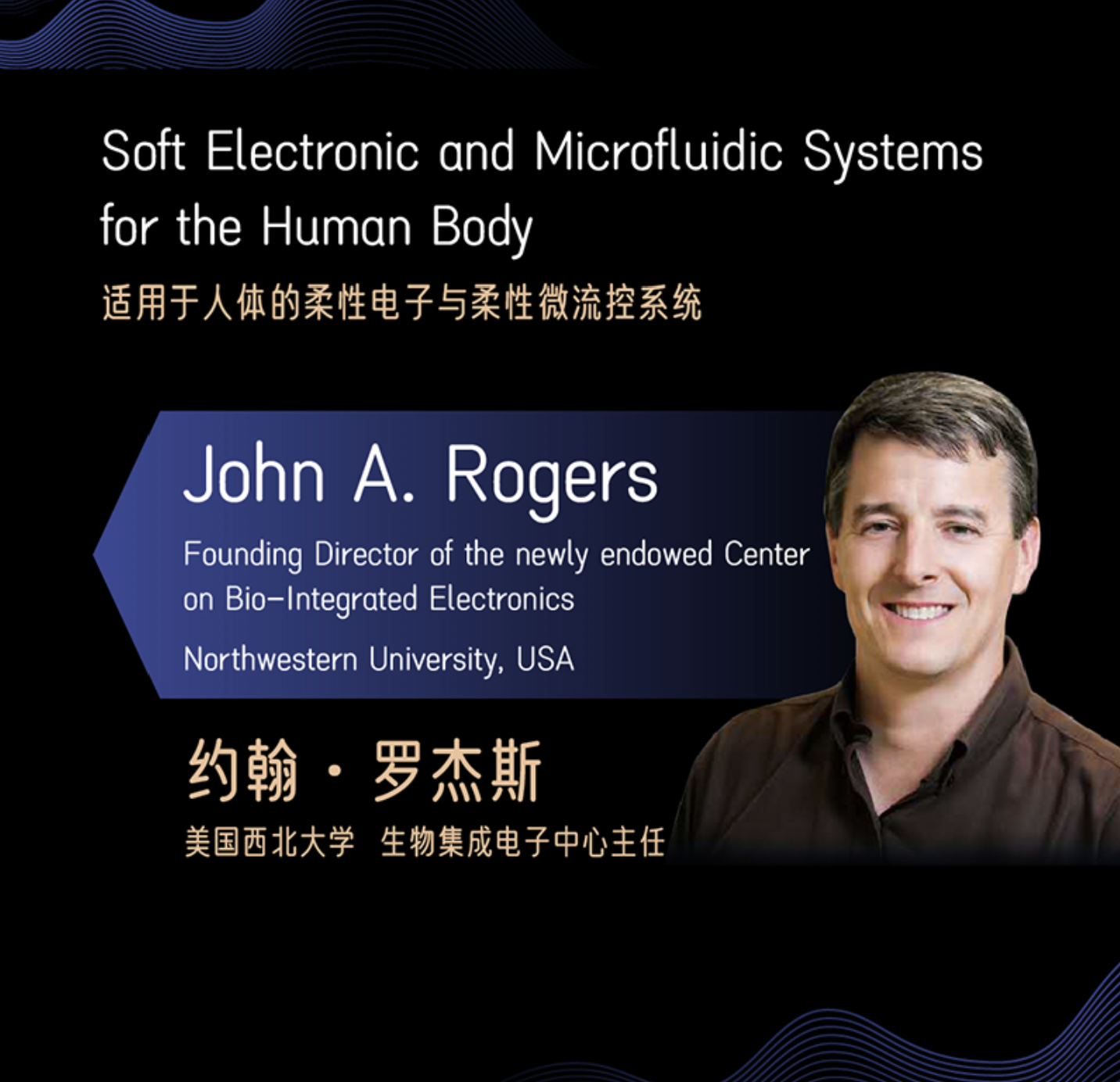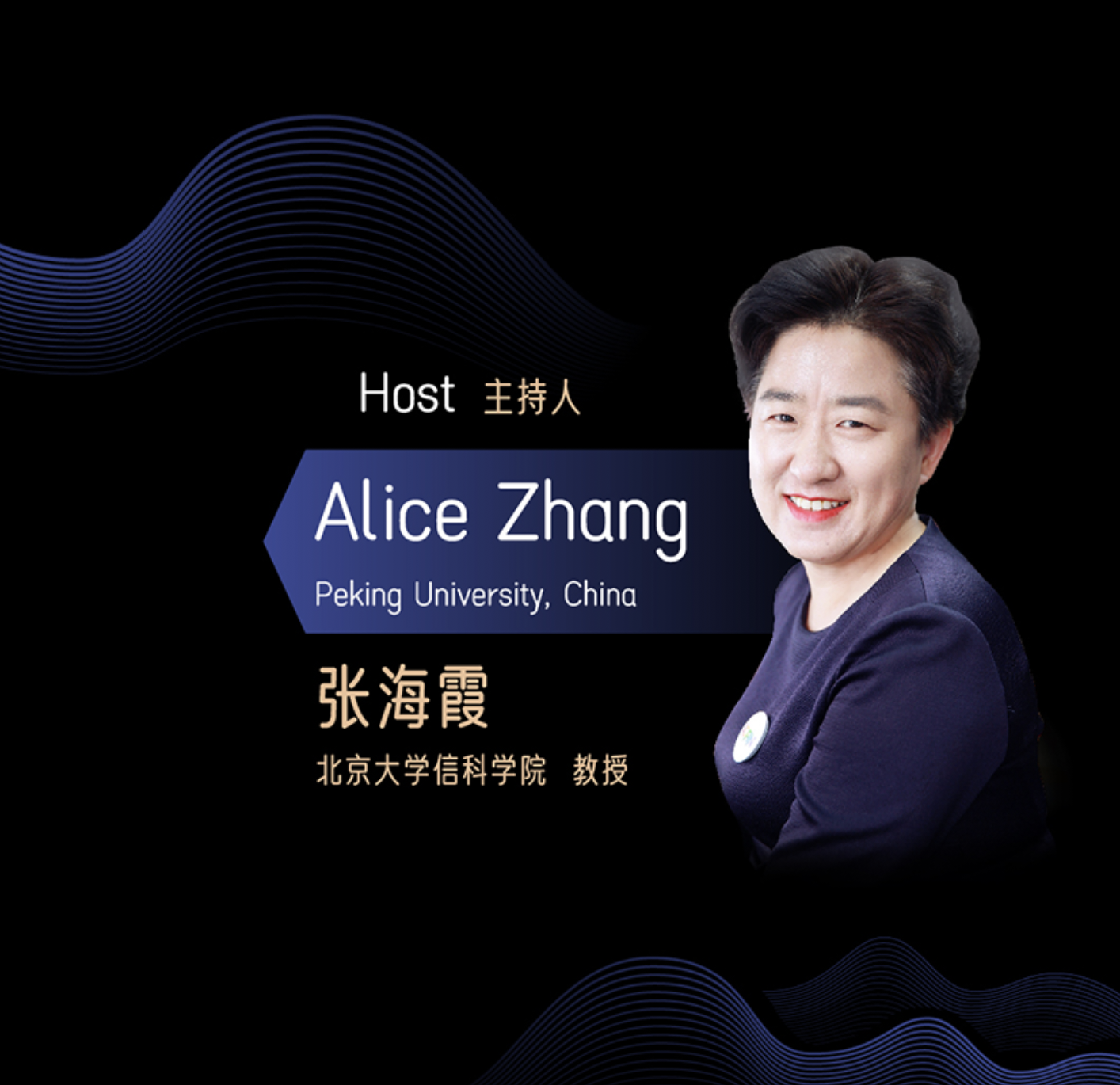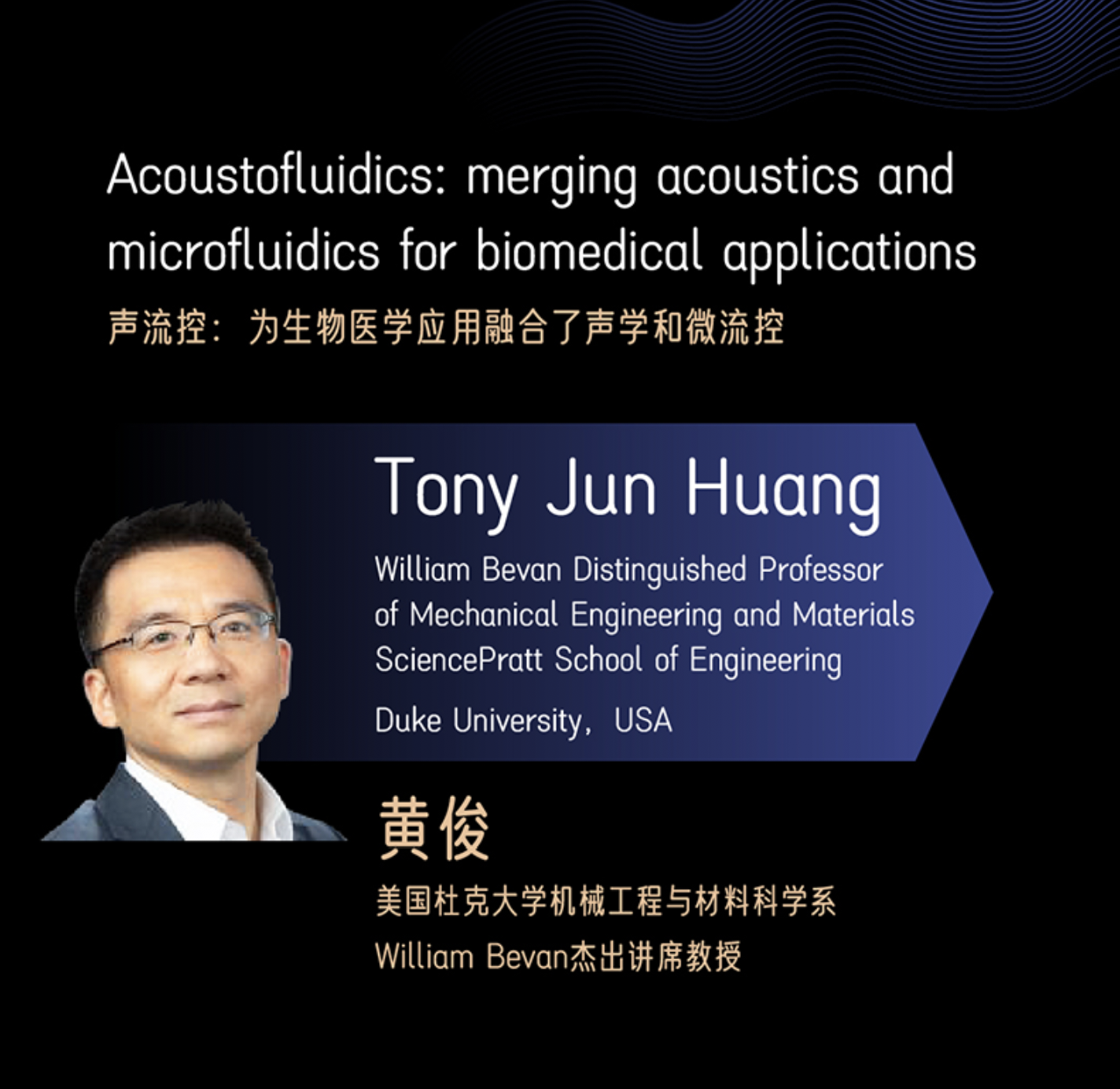博文
张海霞︱iCANX Talks(全球前沿科技直播)本周五隆重开播啦!
|||
iCANX Talks(全球前沿科技直播)是iCAN最新推出的在线讲座,每周五晚上(北京时间晚8—11点,纽约早上8—11点,伦敦下午1—4点),邀请前沿科技领域的顶级科学家做学术报告、分享科研心得体会,欢迎大家关注收听,这个特殊时期,iCAN和你一起共克时艰:科研工作很重要,防疫在家听报告,直播讨论加研讨,互相学习更高效!



Talk 1
Soft Electronic and Microfluidic Systems for the Human Body
Professor John A. Rogers
Founding Director of the newly endowed Center on Bio-Integrated Electronics
Northwestern University, USA
Group Website: http://rogersgroup.northwestern.edu
ABSRACT
Biological tissues are mechanically soft, with complex, time-dependent 3D curvilinear shapes; modern electronic and microfluidic technologies are rigid, with simple, static 2D layouts. Eliminating this profound mismatch in physical properties will create vast opportunities in man-made systems that can intimately integrate with the human body, for diagnostic, therapeutic or surgical function with important, unique capabilities in fitness/wellness, sports performance and clinical healthcare. Over the last decade, a convergence of new concepts in materials science, mechanical engineering, electrical engineering and advanced manufacturing has led to the emergence of diverse, novel classes of 'biocompatible' electronic and microfluidic systems with skin-like physical properties. This talk describes the key ideas and presents some of the most recent device examples, including (1) wireless, battery-free electronic 'tattoos', with applications in continuous monitoring of vital signs in neonatal and pediatric intensive care, including active deployments in the most advanced hospitals in the US and clinics in multiple countries in Africa and (2) microfluidic platforms that can capture, manipulate and perform biomarker analysis on microliter volumes of sweat, with applications in precise hydration management in sports and fitness, including commercial devices featured on celebrity sports figures with Gatorade. The presentation will feature the most recent results from the group, with highlights in published and unpublished work over the last three months.
BIOGRAPHY
Professor John A. Rogers, Northwestern University, the Louis Simpson and Kimberly Querrey Professor of Materials Science and Engineering, Biomedical Engineering, Mechanical Engineering, Electrical Engineering and Computer Science, Chemistry and Neurological Surgery, where he is also the founding Director of the newly endowed Center on Bio-Integrated Electronics.
Rogers’ research has been recognized with many awards including, most recently, the Benjamin Franklin Medal from the Franklin Institute (2019), the MRS Medal from the Materials Research Society (2018), the Samuel R. Natelson Award from the American Association for Clinical Chemistry (2018), the Nadai Medal from the American Society of Mechanical Engineers (2017), the IEEE EMBS Trailblazer Award (2016), the ETH Zurich Chemical Engineering Medal (2015), the A.C. Eringen Medal from the Society for Engineering Science (2014), the Smithsonian Award for American Ingenuity in the Physical Sciences (2013), the Robert Henry Thurston Award from the American Society of Mechanical Engineers (2013), the Mid-Career Researcher Award from the Materials Research Society (2013), the Lemelson-MIT Prize (2011), a MacArthur Fellowship from the John D. and Catherine T. MacArthur Foundation (2009), the George Smith Award from the IEEE (2009), the National Security Science and Engineering Faculty Fellowship from the Department of Defense (2008), the Daniel Drucker Eminent Faculty Award from the University of Illinois (2007) and the Leo Hendrick Baekeland Award from the American Chemical Society (2007). Rogers is a member of the National Academy of Engineering (NAE; 2011), the National Academy of Sciences (NAS; 2015), the National Academy of Medicine (NAM; 2019) and the American Academy of Arts and Sciences (AAAS; 2014), a Fellow of the Institute for Electrical and Electronics Engineers (IEEE; 2009), the American Physical Society (APS; 2006), the Materials Research Society (MRS; 2007), the American Association for the Advancement of Science (AAAS; 2008) and the National Academy of Inventors (NAI; 2013). He received an Honoris Causa Doctorate from the Ecole Polytechnique Federale de Lausanne (EPFL), and holds Honorary Professorships at Fudan University, Shanghai Jiaotong University and Zhejiang University.

适用于人体的柔性电子与柔性微流控系统
约翰 A 罗杰斯教授
生物集成电子中心主任
美国西北大学
课题组主页:http://rogersgroup.northwestern.edu/contact.php
摘要
生物组织具有柔性、复杂的三维形貌,且随时间不断变化;而目前的电子与微流控系统具有刚性、简单的平面结构。如果能消除生物组织与电子、微流控系统在物理性质上的种种差异,则可以使这些人工系统与人体无缝集成,提供多种多样的检测、治疗功能,从而广泛应用在健身、健康、体育运动、临床试验等诸多领域。近年来,通过综合材料科学、力学、电子学以及先进制造技术,一系列具有生物兼容性、且在物理性质上与人体皮肤类似的柔性电子与柔性微流控系统已经被研发出来。本报告将介绍课题组近年来的一些核心技术和概念,包括(1)无需电池的无线电子纹身,具有临床级别的生命体征信号检测能力,且已经被应用于美国的新生儿及儿科重症监室以及非洲的部分国家;(2)柔性微流控系统,可以获取、控制并分析微升级别的汗液,且已经被应用于于运动与健身中的精确的人体水分管理,商业化的器件得到了知名运动员及佳得乐公司的支持与推广。本报告将介绍课题组最新的研究进展,突出近三个月内已经发表和未发表的成果。
简历
约翰 A 罗杰斯教授于1989年本科毕业于德克萨斯州大学奥斯汀分校,获物理化学学士学位;1992年硕士毕业于MIT,获物理化学硕士学位;1995年博士毕业于MIT,获物理化学博士学位。1995-1997年,罗杰斯教授获得了哈佛大学Junior Fellow的资助。在此期间,罗杰斯教授同时成立了Active Impulse Systems公司,用于产业化他博士期间开发的一些列技术。罗杰斯教授在1997年加入贝尔实验室,担任凝聚态物理研究部门的技术员,并在2000-2003年担任该部门的主任。2003-2016年,罗杰斯教授任职于伊利诺伊大学厄巴纳-尚佩恩分校,担任Swanlund讲席教授(该校最高荣誉),主要任职于材料科学工程系,并在化学系、生物工程系、机械工程系、电子与计算机工程系兼职,同时担任担任纳米科学与工程中心-纳米加工分部的主任。2009-2012年,罗杰斯教授担任Seitz材料实验室主任。罗杰斯教授于2016年9月加入西北大学,担任Louis Simpson与Kimberly Querrey教授,任职于材料科学与工程系、生物医学工程系、机械工程系、电子与计算机工程系、化学系、以及神经外科系,同时担任生物集成电子中心主任。
罗杰斯教授的研究方向微米纳米加工技术、电子光电子器件、生物集成系统等。他已经发表超过650篇论文,获得了超过70项专利授权并在各大公司及他所创建的多个初创公司广泛使用。罗杰斯教授为美国工程院院士(2011)、美国科学院院士(2015)、美国医学院院士(2019)、美国文理科学园院士(2014),电气电子工程师学会会士(IEEE, 2009)、美国物理学会会士(2006, APS)、材料研究会会士(MRS, 2007)、美国科学促进会会士(AAAS, 2008)、美国国家发明家学会会士(NAI, 2013),获得的奖项包括: Benjamin Franklin 奖章(2019),MRS奖章(2018),Samuel R. Natelson奖(2018),Nadai奖章(2017)IEEE EMBS Trailblazer奖(2016),ETH Zurich Chemical Engineering奖章(2015)等。

Talk2
Acoustofluidics: merging acoustics and microfluidics for biomedical applications
Tony Jun Huang
William Bevan Distinguished Professor of Mechanical Engineering and Materials Science
Pratt School of Engineering, Duke University
Group Website: https://acoustofluidics.pratt.duke.edu/
ABSRACT
The past two decades have witnessed an explosion in lab-on-a-chip research with applications in biology, chemistry, and medicine. The continuous fusion of novel properties of physics into microfluidic environments has enabled the rapid development of this field. Recently, a new lab-on-a-chip frontier has emerged, joining acoustics with microfluidics, termed acoustofluidics. Here we summarize our recent progress in this exciting field and show the depth and breadth of acoustofluidic tools for biomedical applications through many unique examples, from exosome separation to cell-cell communications to 3D bioprinting, from circulating tumor cell isolation and detection to ultra-high-throughput blood cell separation for therapeutics, from high-precision micro-flow cytometry to portable yet powerful fluid manipulation systems. These acoustofluidic technologies are capable of delivering high-precision, high-throughput, and high-efficiency cell/particle/fluid manipulation in a simple, inexpensive, cell-phone-sized device. More importantly, the acoustic power intensity and frequency used in these acoustofluidic devices are in a similar range as those used in ultrasonic imaging, which has proven to be extremely safe for health monitoring during various stages of pregnancy. As a result, these methods are extremely biocompatible; i.e., cells and other biospecimen can maintain their natural states without any adverse effects from the acoustic manipulation process. With these unique advantages, acoustofluidic technologies meet a crucial need for highly accurate and amenable disease diagnosis (e.g., early cancer detection and monitoring of prenatal health) as well as effective therapy (e.g., transfusion and immunotherapy).
BIOGRAPHY
Tony Jun Huang is the William Bevan Distinguished Professor of Mechanical Engineering and Materials Science at Duke University. Previously he was a professor and the Huck Distinguished Chair in Bioengineering Science and Mechanics at The Pennsylvania State University. He received his Ph.D. degree in Mechanical and Aerospace Engineering from the University of California, Los Angeles (UCLA) in 2005. His research interests are in the fields of acoustofluidics, optofluidics, and micro/nano systems for biomedical diagnostics and therapeutics. He has authored/co-authored over 220 peer-reviewed journal publications in these fields. His journal articles have been cited more than 17,000 times, as documented at Google Scholar (h-index: 72). He also has 26 issued or pending patents. He was elected a fellow of the following six professional societies: the American Association for the Advancement of Science (AAAS), the American Institute for Medical and Biological Engineering (AIMBE), the American Society of Mechanical Engineers (ASME), the Institute of Electrical and Electronics Engineers (IEEE), the Institute of Physics (IoP), and the Royal Society of Chemistry (RSC). Huang’s research has gained international recognition through numerous prestigious awards and honors including a 2010 National Institutes of Health (NIH) Director’s New Innovator Award, a 2012 Outstanding Young Manufacturing Engineer Award from the Society for Manufacturing Engineering, a 2013 American Asthma Foundation (AAF) Scholar Award, JALA Top Ten Breakthroughs of the Year Award in 2011, 2013, and 2016, the 2014 IEEE Sensors Council Technical Achievement Award from the Institute of Electrical and Electronics Engineers (IEEE), the 2017 Analytical Chemistry Young Innovator Award from the American Chemical Society (ACS), the 2019 Van Mow Medal from the American Society of Mechanical Engineers (ASME), and the 2019 Technical Achievement Award from the IEEE Engineering in Medicine and Biology Society (EMBS).

声流控:为生物医学应用融合了声学和微流控
Acoustofluidics: merging acoustics and microfluidics for biomedical applications
Tony Jun Huang(黄俊)
杜克大学机械工程与材料科学系William Bevan杰出讲席教授
课题组网址:https://acoustofluidics.pratt.duke.edu/
摘要
过去二十年见证了芯片实验室技术及其应用在生物学、化学和医学领域的爆炸式发展。物理新特性在微流控环境中的不断融合,使得这一领域得以迅速发展。最近,出现了一种结合了声学和微流控的新型芯片实验室前沿技术,称为声流控。在这里,我们总结了本研究团队在这个令人兴奋的领域的最新进展,并且通过许多独特的例子显示了声流控工具在生物医学应用方面的深度和广度,从外泌体分离到细胞与细胞间的信息通信到生物3D打印,从循环肿瘤细胞的分离与检测到用于治疗的超高通量的血细胞分离,从高精度的微流血细胞计数到便携但强大的流体操控系统。这些声流控技术能够在简单、廉价、手机大小的设备中提供高精度、高通量和高效率的细胞/粒子/流体操控。更重要的是,这些声流控设备中使用的声功率强度和频率与已被证明是非常安全的、可以在怀孕的各个阶段进行健康监测的超声波成像设备的声功率强度和频率相近。因此,这些方法具有极强的生物相容性;即,细胞和其他生物样本可以保持它们的自然状态,而不会受到声学操控过程中的任何负面影响。声流控技术以其独特的优势,满足了疾病诊断(如早期癌症检测和产前健康监测)和有效治疗(如输血和免疫治疗)的关键需求。
简历
黄俊(Tony Jun Huang)博士是杜克大学机械工程与材料科学系William Bevan杰出讲席教授。此前,他是宾州州立大学生物工程科学与力学系的Huck杰出讲席教授。2005年在加州大学洛杉矶分校机械与航空工程系获得博士学位。他的研究兴趣在声流控、光流控、和微/纳系统在生物医药诊断和治疗领域的应用研究。到目前为止,他在这些领域发表了超过220篇同行评审的期刊论文。他的期刊论文总引用次数超过17000次,谷歌H因子达到72。并且,他还拥有26项授权/在审专利。他已被选为以下六个国际专业学会的会士(fellow):美国科学促进会(AAAS)、美国医学和生物工程学会(AIMBE)、美国机械工程师协会(ASME)、国际电气和电子工程师协会(IEEE)、英国物理学会(IOP)、英国皇家化学学会(RSC)。同时,他的研究也获得了诸多的奖项和荣誉,其中包括2010年美国国立卫生研究院(NIH)青年创新奖,2012年国际制造工程学会杰出青年制造工程师奖,2013年美国哮喘基金会(AAF)学者奖,2011、2013、2016年JALA年度最佳十大突破奖,2014年国际电气和电子工程师协会(IEEE)的传感器理事会技术成就奖(IEEE),2017年美国化学学会(ACS)分析化学青年创新奖,2019年美国机械工程师协会(ASME)Van Mow奖章和2019年IEEE EMBS技术成就奖。

https://blog.sciencenet.cn/blog-299-1228633.html
上一篇:张海霞︱怎样才能成为哈佛教授?
下一篇:张海霞︱iCANX Talks开讲嘉宾John A Rogers